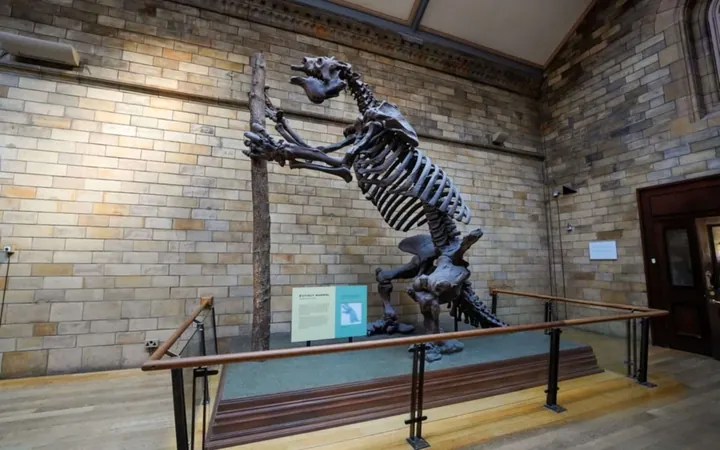
Ancient Sloth Bone Discovery in Uruguay Could Change Human History
2025-07-12
Author: Chun
33,000-Year-Old Sloth Bone Sparks Revolutionary Insights
A groundbreaking find in southern Uruguay is challenging everything we thought we knew about human interactions with megafauna in the Americas. Unearthed in Arroyo del Vizcaíno, a 33,000-year-old giant ground sloth bone is revealing signs that may indicate early human activity far earlier than previously documented.
The Stunning Discovery: A Bone with a Twist
The fossilized heel bone of the giant sloth, scientifically known as Lestodon armatus, was discovered among a treasure trove of over 2,000 bones. But it's the specific specimen, referred to as CAV 45, that has scientists buzzing. It features a deep, cone-shaped indentation, a striking 21 mm wide and 41 mm deep, suggesting it was struck with significant force—possibly by a weapon wielded by early humans.
Is it Human-Made? Unveiling the Evidence
Utilizing state-of-the-art CT scanning and silicone casting techniques, researchers have closely analyzed the injury. They found tiny striations within the wound that indicate the object creating the indentation rotated while being inserted—strongly suggesting a human-made tool was involved.
Adding to the intrigue, organic fibers found within the indentation point to a hardened wooden shaft, hinting it may have been used with a tip made from bone, ivory, or hardwood—characteristics consistent with tools used by early hunters.
Debunking Alternative Theories
In their quest for understanding, scientists eliminated other potential causes for the indentation. They compared the marks to those left by carnivores, environmental erosion, or accidental impacts. Yet, the clean, conical shape of the indentation diverged from bite patterns or random damage, firmly nudging the evidence towards human involvement.
Revising the Timeline of Human and Megafauna Interactions
This astonishing fossil forces us to reconsider the timeline of human existence in the Americas, previously thought to be around 23,000 years ago. The evidence here suggests that human contact with megafauna may date back as far as 33,000 years, predating the Last Glacial Maximum (26,500 to 19,000 years ago). These findings align with other historical data pointing towards an earlier human presence in South America, painting a richer, more complex picture of our ancestors' journey and the megafauna they hunted.
 Brasil (PT)
Brasil (PT)
 Canada (EN)
Canada (EN)
 Chile (ES)
Chile (ES)
 Česko (CS)
Česko (CS)
 대한민국 (KO)
대한민국 (KO)
 España (ES)
España (ES)
 France (FR)
France (FR)
 Hong Kong (EN)
Hong Kong (EN)
 Italia (IT)
Italia (IT)
 日本 (JA)
日本 (JA)
 Magyarország (HU)
Magyarország (HU)
 Norge (NO)
Norge (NO)
 Polska (PL)
Polska (PL)
 Schweiz (DE)
Schweiz (DE)
 Singapore (EN)
Singapore (EN)
 Sverige (SV)
Sverige (SV)
 Suomi (FI)
Suomi (FI)
 Türkiye (TR)
Türkiye (TR)
 الإمارات العربية المتحدة (AR)
الإمارات العربية المتحدة (AR)